Preparing for Series A Fundraising: A Guide for Startup Founders
By Priscilla Tyler, January 4, 2022

While the bulk of our investments are at the seed stage, our support of imaginative, market-defining founders doesn’t stop there. Once we invest in a founder and their team, we’re in it for the long haul as they scale.
Part of my job at True is to make sure the founders and teams we fund have support well beyond their seed rounds. I lead the development of Follow-On Fundraising Services for True-backed founders so they are equipped and empowered to fundraise capital beyond the seed stage confidently.
One of the questions we often receive from founders who are at this stage is how fundraising Series A capital is different from seed. It’s similar in some ways but different in others.
Start thinking about your next fundraise while you still have a year of runway.
Having a year of runway will ensure you have enough time to prepare for your fundraise and iterate between pitch meetings with investors so your pitches get better and better as you go.
Begin preparing for your fundraise about two to three months before you actually start meeting with investors to allow yourself ample time to shape your story and pull together the data you’ll need to support it.
In terms of how long it typically takes to fundraise a follow-on round from start to finish, you can expect it to take around six months with preparation time included.
Merely a compelling story won’t cut it.
At the seed stage, you developed a big-picture pitch that captured investors’ attention and imaginations. For Series A pitch meetings, you’ll need to do that again — and then some.
When raising Series A capital, investors will want to know:
- You can demonstrate product-market fit
- Your team makeup
- Why your company is a solid investment, which you can demonstrate by way of a financial model and a three-year business forecast
- Information about your cash flow and burn
- Any other documentation that validates your proof of concept and makes a case for your future growth and earnings
While your fundraise at this stage doesn’t entirely depend on impressive metrics, showcasing real numbers and forecasting will greatly support your narrative and demonstrate your ability to bring your vision to life.
P.S. We suggest you start with a fresh deck, as opposed to simply updating the pitch deck you used when raising seed capital, to ensure your pitch materials help you tell your new narrative.
Investors will expect you to prove the assumptions you’ve made about what will make your company profitable.
While seed funding largely supported your idea and vision, Series A funding will focus on showcasing product-market fit. Investors expect a lot more from a Series A pitch than they do when they’re considering seed investments.
“As you think about raising later stages of funding, Series A and beyond, the investors that are going to be interested in leading those deals require more information and more data, in a slightly more formal way,” shared True’s Chief Operating Officer, Jim Stewart.
And you’ll want it to be easy to convey this information and data to investors. Most, if not all, of this information can live in a data room (more on that below), which will serve as a landing page where your prospective investors can find the information that shows your company is a sound investment.
Make life easier with a well-organized data room/dashboard.
A data room is simply an online portal where you can store key documents and data, so it’s easy to share them with potential investors after pitch meetings.
Although some in the industry might tell you the data room is only important in later funding rounds, we’ve found it saves founders a lot of time if they create this tool early on.
There’s a lot you could include in your data room, but Jim recommends it contain at least:
- A copy of your pitch deck
- Relevant historical records
- Certificate of incorporation
- Key contracts
- Board minutes
- Tax returns
- Old financial documentation
- Current financial records and reporting
- Current financial model
- A three-year business forecast
Your data room doesn’t have to rely on any fancy technology; in fact in most cases, you can keep to platforms you already use. As Jim says, for a Series A funding round, “We see Box and Dropbox as perfectly adequate to meet most of the needs for a data room.”
If you go this route, do make sure you’re keeping all of the documents in your data room up to date, and be mindful of who has access to this documentation. You can reset passwords or revoke access whenever necessary if you have any concerns.
Consider hiring part-time finance talent to support your fundraising efforts.
At the seed stage, and even Series A, there usually isn’t enough work to have a chief financial officer or other finance hire on your team full time. But you may want to consider engaging with a consultant.
“What I very often see as a best practice is using an outside resource, often part-time,” explained Jim. This person can both act as a controller to ensure basic financial requirements are being met, as well as a high-level thought partner.
“As you get ready to think about selling your story to a new lead investor,” Jim added, “You’ll need more forecasted data and more strategic thinking around your financial model and how your business is going to progress and grow.”
If you aren’t already working with someone in this capacity, you may need to extend that two-to-three-month lead time so you aren’t diving into financial projections with a relative stranger. By the time they’ve helped you secure your Series A, you’ll probably have a really good idea of who you’re looking for to fill your first full-time senior finance role — and the funding to support their salary.
Practice your pitch with peers and seed stage investors.
Having confidence in your pitch is just as important as having a clean and organized data room for Series A fundraises. We recommend doing several dry runs for members of your board, friendly industry peers, and even people outside of your market to make sure they “get” what you’re saying.
And if you’re a founder who received seed funding from us, be sure to take advantage of the deep expertise on our team and in the True Founder Community by scheduling one of our mock pitch sessions. In these sessions, you can solicit honest feedback. If it feels useful, incorporate it into your pitch and continue to iterate between rounds of pitches.
You’ll need your legal team sooner than you think.
After your first financing round, don’t wait until issues arise or a follow-on fundraise is on the horizon to work with legal counsel. Building regular processes and rapport with your lawyers is highly valuable. In between financings, counsel can help you draft employment agreements, establish company policies, assist with equity issuances, and advise on corporate governance and board matters.
“These are just a few of the things an investor will review in your data room,” shared True’s Legal Counsel, Molly Pon. “Utilizing outside counsel between financings can cut down on back and forth in diligence and any clean-up required for the next fundraise.”
Then, as you begin to prepare for your Series A, loop in your legal counsel early. They’ll guide you through due diligence and help you prepare to meet with prospective investors — and their knowledge can save you a tremendous amount of time and put you in the best position to negotiate the terms of your next round.
Between you and your legal counsel, you’ll be able to collect most of the information you’ll need for raising your Series A. For the things that are harder to find or have to be created from scratch: take advantage of the lead time you’ve given yourself and think about whether anyone on your team can help you calculate some numbers or create a slide for your pitch deck.
It will take a village but we’re here to help guide you beyond your seed round and along your way to becoming a long-lasting, durable, and impactful business.

